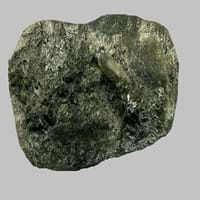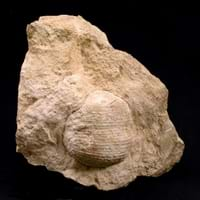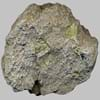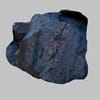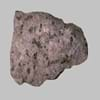Definition
Kenyte is a variety of porphyritic phonolite or trachyte rock with rhomb shaped phenocrysts of anorthoclase with variable olivine and augite in a glassy matrix
Limestone is a sedimentary rock composed mostly of calcite and aragonite, which are different crystal forms of calcium carbonate
Origin
Mount Kenya
New Zealand
Discoverer
J. W. Gregory
Belsazar Hacquet
Etymology
From the mountain ranges- Mount Kenya and is named by J. W. Gregory in 1900
From lime and stone in late 14th Century
Class
Igneous Rocks
Sedimentary Rocks
Sub-Class
Durable Rock, Medium Hardness Rock
Durable Rock, Medium Hardness Rock
Group
Not Applicable
Not Applicable
Other Categories
Fine Grained Rock, Opaque Rock
Fine Grained Rock, Opaque Rock
Texture
Glassy, Granular
Clastic or Non-Clastic
Color
Brown, Buff, Cream, Green, Grey, Pink, White
Beige, Black, Blue, Brown, Cream, Gold, Green, Grey, Light Green, Light Grey, Linen, Pink, Red, Rust, Silver, White, Yellow
Durability
Durable
Durable
Scratch Resistant
Yes
Yes
Appearance
Banded and Foilated
Rough and Banded
Interior Uses
Decorative Aggregates, Entryways, Homes, Interior Decoration, Kitchens
Decorative Aggregates, Interior Decoration
Exterior Uses
As Building Stone, Garden Decoration, Paving Stone
As Building Stone, As Facing Stone, Garden Decoration, Office Buildings
Other Architectural Uses
Curbing
Curbing
Construction Industry
As Dimension Stone, Cement Manufacture, Construction Aggregate, for Road Aggregate, Landscaping, Making natural cement, Manufacture of Magnesium and Dolomite Refractories, Production of Glass and Ceramics
Cement Manufacture, Cobblestones, for Road Aggregate, Production of Glass and Ceramics, Raw material for the manufacture of mortar, Roadstone, Source of calcium
Medical Industry
Not Yet Used
In Chemical and Pharmaceutical Industry, Medicines and Cosmetics
Antiquity Uses
Artifacts, Monuments, Sculpture
Artifacts, Monuments, Sculpture, Small Figurines
Commercial Uses
Cemetery Markers, Creating Artwork
Animal feed filler, As a Feed Additive for Livestock, Paper Industry, Raw material for manufacture of quicklime, slaked lime, Soil Conditioner, Used in aquariums, Whiting material in toothpaste, paint and paper
Types
Not Available
Chalk, Coquina, Fossiliferous Limestone, Lithographic Limestone, Oolitic Limestone, Travertine, Tufa
Features
Application of acids on the surface causes cloudy frosting, Available in Lots of Colors and Patterns, Dissolves in hydrochloric acid, Is one of the oldest rock
Host Rock for Lead, Stalactites and stalagmites are formed from this rock, Zinc and Copper Deposits
Archaeological Significance
Famous Monuments
Data Not Available
Acropolis of Athens in Greece, Agia Sophia in Istanbul, Turkey, Al Aqsa Mosque in Jerusalem, Angkor Wat in Cambodia, Big Ben in London, Charminar in Hyderabad, India, Chhatrapati Shivaji Terminus in Maharashtra, India, Chichen Itza in Mexico, Empire State Building in New York, Khajuraho Temples, India, Kremlin in Moscow, Louvre in Paris, France, Neuschwanstein in Bavaria, Potala Palace in Lahasa, Tibet, Wailing Wall in Jerusalem
Famous Sculptures
Data Not Available
Ajanta Caves in Maharashtra, India, Elephanta Caves in Maharashtra, India
Formation
Kenyte is a fine-grained, hard rock which is a type of metasomatite, essentially altered basalt. It forms with or without crystallization, either below the surface as intrusive rocks or on the surface as extrusive rocks.
Limestone is a sedimentary rock which is mainly made up of calcium carbonate.
Mineral Content
Albite, Amphibole, Biotite, Cancrinite, Feldspar, Hornblende, Plagioclase, Pyroxene, Sodalite
Calcite, Chert, Clay, Dolomite, Quartz, Sand, Silt
Compound Content
Aluminium Oxide, CaO, Iron(III) Oxide, FeO, Potassium Oxide, MgO, MnO, Sodium Oxide, Phosphorus Pentoxide, Silicon Dioxide, Titanium Dioxide
Aluminium Oxide, NaCl, CaO, Iron(III) Oxide, FeO, MgO
Types of Metamorphism
Burial Metamorphism, Cataclastic Metamorphism, Impact Metamorphism
Not Applicable
Types of Weathering
Biological Weathering
Biological Weathering, Chemical Weathering, Mechanical Weathering
Types of Erosion
Chemical Erosion, Coastal Erosion
Chemical Erosion, Coastal Erosion
Grain Size
Fine Grained
Fine Grained
Fracture
Conchoidal to Uneven
Splintery
Streak
White, Greenish White or Grey
White
Porosity
Highly Porous
Less Porous
Luster
Greasy to Dull
Dull to Pearly
Cleavage
Poor
Non-Existent
Toughness
Not Available
1
Specific Gravity
2.6
2.3-2.7
Transparency
Translucent to Opaque
Opaque
Density
2.6 g/cm3
2.3-2.7 g/cm3
Specific Heat Capacity
Not Available
Resistance
Heat Resistant, Impact Resistant, Wear Resistant
Pressure Resistant
Deposits in Eastern Continents
Asia
Indonesia, Iran, Russia, Saudi Arabia, Sri Lanka, Taiwan, Thailand, Turkey, Turkmenistan, Vietnam
Brunei, India, Indonesia, Malaysia, Singapore, Thailand, Vietnam
Africa
Angola, Egypt, Madagascar, Namibia, Nigeria, South Africa
Cameroon, Chad, Ghana, Kenya, Malawi, Sudan, Tanzania, Togo, Zambia, Zimbabwe
Europe
Andorra, Finland, France, Germany, Great Britain, Italy, Norway, Portugal, Spain, Sweden
United Kingdom
Others
Greenland
Not Yet Found
Deposits in Western Continents
North America
Canada, USA
USA
South America
Brazil, Chile, Colombia, Uruguay, Venezuela
Colombia
Deposits in Oceania Continent
Australia
New Zealand, Queensland, South Australia, Tasmania, Western Australia
Adelaide, New Zealand, Queensland, Tonga, Victoria, Yorke Peninsula
Kenyte vs Limestone Characteristics
Though some rocks look identical, they have certain characteristics which distinguish them from others. Characteristics of rocks include texture, appearance, color, fracture, streak, hardness etc. Kenyte vs Limestone characteristics assist us to distinguish and recognize rocks. Also you can check about Properties of Kenyte and Properties of Limestone. Learn more about Kenyte vs Limestone in the next section. The interior uses of Kenyte include Decorative aggregates, Entryways, Homes, Interior decoration and Kitchens whereas the interior uses of Limestone include Decorative aggregates and Interior decoration. Due to some exceptional properties of Kenyte and Limestone, they have various applications in construction industry. The uses of Kenyte in construction industry include As dimension stone, Cement manufacture, Construction aggregate, For road aggregate, Landscaping, Making natural cement, Manufacture of magnesium and dolomite refractories, Production of glass and ceramics and that of Limestone include Cement manufacture, Cobblestones, For road aggregate, Production of glass and ceramics, Raw material for the manufacture of mortar, Roadstone, Source of calcium.
More about Kenyte and Limestone
Here you can know more about Kenyte and Limestone. The life cycle of a rock consists of formation of rock, composition of rock and transformation of rock. The composition of Kenyte and Limestone consists of mineral content and compound content. The mineral content of Kenyte includes Albite, Amphibole, Biotite, Cancrinite, Feldspar, Hornblende, Plagioclase, Pyroxene, Sodalite and mineral content of Limestone includes Calcite, Chert, Clay, Dolomite, Quartz, Sand, Silt. You can also check out the list of all Igneous Rocks. When we have to compare Kenyte vs Limestone, the texture, color and appearance plays an important role in determining the type of rock. Kenyte is available in brown, buff, cream, green, grey, pink, white colors whereas, Limestone is available in beige, black, blue, brown, cream, gold, green, grey, light green, light grey, linen, pink, red, rust, silver, white, yellow colors. Appearance of Kenyte is Banded and Foilated and that of Limestone is Rough and Banded. Properties of rock is another aspect for Kenyte vs Limestone. The hardness of Kenyte is 5.5-6 and that of Limestone is 3-4. The types of Kenyte are Not Available whereas types of Limestone are Chalk, Coquina, Fossiliferous Limestone, Lithographic Limestone, Oolitic Limestone, Travertine, Tufa. Streak of rock is the color of powder produced when it is dragged across an unweathered surface. The streak of Kenyte and Limestone is white, greenish white or grey. The specific heat capacity of Kenyte is Not Available and that of Limestone is 0.91 kJ/Kg K. Depending on the properties like hardness, toughness, specific heat capacity, porosity etc., rocks are resistant to heat, wear, impact, etc.Kenyte is heat resistant, impact resistant, wear resistant whereas Limestone is pressure resistant.
